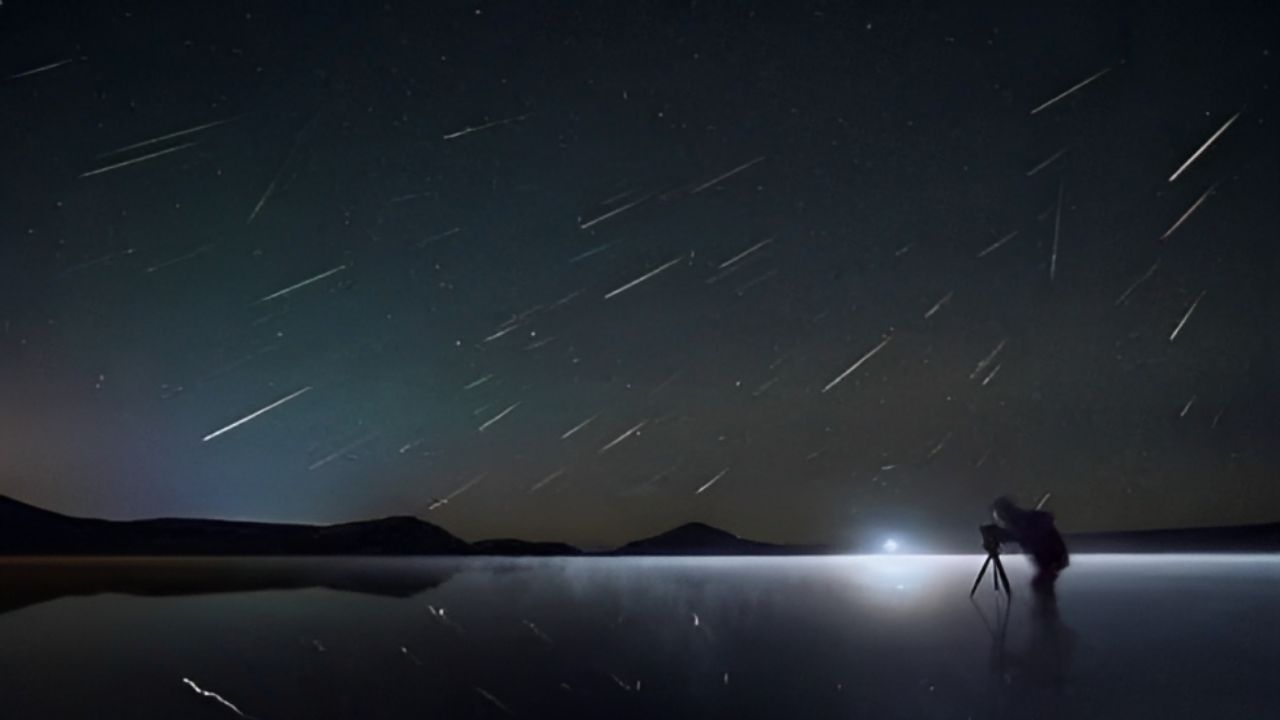Spectacular Celestial Show As the night sky unveils its celestial wonders, one of the most anticipated meteor showers of the year, the Geminids, is set to reach its peak tonight. Nature enthusiasts, stargazers, and astronomy aficionados around the globe are gearing up for a breathtaking spectacle as the Geminids Meteor Shower graces the heavens with its radiant display. In this article, we will delve into the origins of the Geminids, the science behind meteor showers, and how you can make the most of this astronomical event as it reaches its climax.
The Geminids Meteor Shower: An Astronomical Extravaganza
A. Origins and Radiant Point:
The Geminids Meteor Shower, an annual event, is unique among its celestial counterparts due to its mysterious origin. Unlike other meteor showers that are typically associated with comets, the Geminids are linked to an asteroid named 3200 Phaethon. This space rock, once thought to be a dormant comet, sheds debris as it approaches the sun, giving rise to the spectacular meteor shower we witness each December. Spectacular Celestial Show
The radiant point, the apparent location from which the meteors originate, lies in the constellation Gemini. This point, near the bright stars Castor and Pollux, lends the meteor shower its name. As Earth traverses the debris left by 3200 Phaethon, the night sky is illuminated with streaks of light as these particles burn up in our atmosphere. Spectacular Celestial Show
The Science Behind Meteor Showers
A. Meteoroids, Meteors, and Meteorites:
Understanding the terminology is crucial to appreciating the celestial event unfolding overhead. Meteoroids are small particles, often debris from comets or asteroids, that orbit the sun. When these meteoroids enter Earth’s atmosphere, they become meteors, commonly referred to as “shooting stars” or “falling stars.” The dazzling streaks of light produced during a meteor shower are the result of meteoroids burning up due to friction with the Earth’s atmosphere.
While most meteoroids never reach the Earth’s surface, those that do are called meteorites. These fragments can provide valuable insights into the composition of our solar system and are studied by scientists to unravel the mysteries of our cosmic neighborhood.
Prime Viewing Conditions
A. Dark Skies and Ideal Locations:
To witness the Geminids Meteor Shower at its peak, choosing the right location is paramount. Seek out areas with minimal light pollution, as darker skies enhance the visibility of meteors. Rural locations, away from city lights, are ideal for an unobstructed view of the celestial display.
Additionally, be mindful of the moon’s phase. A waxing crescent or waning gibbous moon is preferable, as a full moon can diminish the visibility of fainter meteors. Checking the lunar calendar beforehand can help ensure optimal viewing conditions.
Equipment and Preparation
A. Naked Eye Observations:
One of the beauty of meteor showers lies in their accessibility; no specialized equipment is required to enjoy the show. Grab a comfortable chair or blanket, dress warmly, and lie back to take in the expansive night sky. It’s recommended to let your eyes adjust to the darkness for about 20 minutes before the meteor shower begins for an enhanced viewing experience.
Photography enthusiasts may consider bringing a camera with a wide-angle lens and a sturdy tripod to capture the celestial spectacle. However, the primary focus should be on immersing oneself in the natural beauty unfolding overhead.
Meteor Shower Etiquette
A. Patience and Relaxation:
Meteor showers, including the Geminids, are unpredictable, and patience is key when waiting for the meteors to streak across the sky. To fully enjoy the experience, relax, breathe, and let your eyes roam the vastness of the night sky. Avoid the use of flashlights, as they can hinder your night vision and disrupt the experience for others.
Encourage friends and family to join you in this cosmic celebration, fostering a sense of community as you collectively marvel at the wonders of the universe.
Conclusion:
Tonight marks the zenith of the Geminids Meteor Shower, a celestial event that captivates hearts and minds across the globe. As you venture into the darkness to witness this natural extravaganza, remember the science that underpins the phenomenon, the ideal conditions for viewing, and the importance of patience and relaxation. Whether you’re an amateur astronomer or a casual sky-watcher, the Geminids Meteor Shower offers a splendid opportunity to connect with the cosmos and marvel at the vastness of our universe. So, don your warmest attire, find the perfect spot, and prepare to be dazzled by nature’s own firework display in the night sky.



